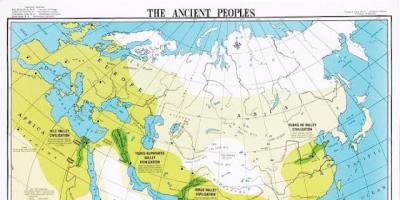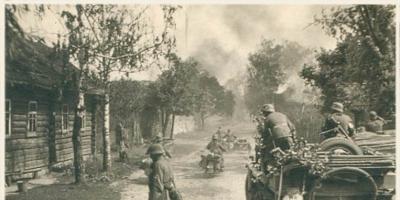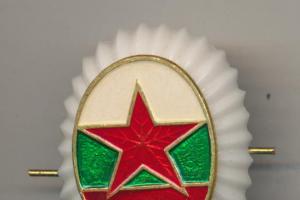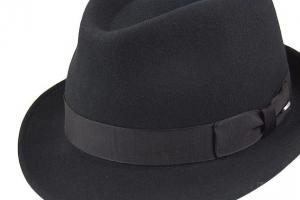The use of plasma cutting is widespread. It is used in mechanical engineering, utilities, shipbuilding, and the manufacture of metal structures. Plasma cutting is based on the principle that ionized air begins to conduct electricity.
Metal cutting is carried out by plasma, which is heated ionized air, and a plasma arc. The operating principles characteristic of plasma cutting of metal will be described below.
What is plasma cutting
When cutting metal with plasma, the electric arc intensifies. This is possible due to the action of gas under pressure. The cutting element heats up to high temperatures high values, resulting in high-quality and fast cutting of metal.
Unlike its plasma counterpart, it does not contribute to overheating of the entire processed product. High temperature occurs directly at the place where the metal is cut, and the remaining parts of the product do not heat up and are not deformed.
The principle of plasma cutting of metal is based on:
- delivery of the required voltage by a current source (standard voltage - 220 V, increased voltage - 380 V, for cutting metal at large enterprises);
- transmitting current to the plasma torch (torch) through cables, as a result, an electric arc lights up between the anode and cathode;
- supply of air flows through hoses by a compressor to the device;
- the action of swirlers inside the plasmatron that direct flows to the electric arc;
- the passage of vortex air flows through an electric arc and the creation of ionizing air heated to high temperatures;
- closing the working arc between the electrode and the surface being treated when the plasma torch is brought to it;
- exposure to air under high pressure and high temperature on the product being processed.

The result is a thin cut with minimal sagging.
The arc can burn in standby mode if the device is not used at a specific time. During standby mode, combustion is maintained automatically. When the torch is brought to the workpiece, the arc instantly goes into operating mode and instantly cuts the metal.
After turning off the device, it is purged to remove debris and cool the electrodes.
The electric arc is universal in its action. It is capable of not only cutting, but also welding metal products. For welding, filler wire suitable for the specific type of metal is used. It is not air that is passed through the arc, but an inert gas.

Plasma cutter structure
The name given to the apparatus used to cut metal products different ways. The unit structure includes the following elements:
- electrical power source;
- compressor;
- plasmatron;
- cable hoses.

Several devices act as power sources:
- inverter;
- transformer.

Each device has a number of advantages and disadvantages. The advantages of the inverter include:
- cheapness;
- arc stability;
- ease of use in areas with difficult access;
- light weight;
- high efficiency, exceeding that of a transformer by 30%;
- efficiency.
What are the disadvantages and limitations?

The main disadvantage of the inverter is the inability to use it for cutting thick metal products.
The transformer is effectively used when cutting thick-walled metal that an inverter cannot handle. It can withstand fluctuations in mains voltage, but is characterized by low efficiency. Transformers are inconvenient due to their heavy weight.
A compressor is a device that supplies air to an electric arc. The mechanism contributes to the creation of vortex air flows directed towards it. The compressor ensures that the arc cathode spot is clearly located in the center of the electrode. If the process is disrupted, consequences arise in the form of:
- formation of two electric arcs at once;
- weak arc burning;
- plasma torch failure.
During the operation of a conventional non-industrial plasma cutter, only compressed air is passed through the compressor. It creates plasma and cools the electrodes. Industrial units use mixtures of gases based on oxygen, helium, nitrogen, argon, and hydrogen.
The plasma torch performs the main function of the device - cutting the product. His device includes:
- cooler;
- electrode;
- cap;
- nozzle.

The plasmatron contains a hafnium electrode that excites the electric arc. Zirconium, less often beryllium and thorium electrodes are used. Their oxides are toxic and even radioactive.
A plasma jet passes through the plasmatron nozzle, cutting the products. The quality of cutting, technology, speed of operation of the unit, width of the cut and cooling rate depend on its diameter.
The cable carries current coming from the inverter or transformer. Compressed air moves through the hoses, forming plasma in the plasma torch.
A sequential study of the stages of plasma cutting of metals allows you to understand how it works:
- the ignition button is pressed, leading to the start of current supply from the transformer or inverter to the plasmatron;
- a pilot electric arc with a temperature of 70000C appears inside the plasmatron;
- an arc is ignited between the nozzle tip and the electrode;
- compressed air enters the chamber, which passes through the arc, heating and ionizing;
- in the nozzle the incoming air is compressed, escaping from it in a single stream at a speed of 3 m/s;
- the compressed air escaping from the nozzle heats up to 300,000C, turning into plasma;
- when the plasma comes into contact with the product, the pilot arc goes out and the cutting (working) arc lights up;
- the working arc melts the metal at the point of impact, the result is a cut;
- parts of the molten metal are blown away from the product by air currents escaping from the nozzle.

Any plasma metal cutting technology depends on the cutting speed and air flow. High speed results in a finer cut. At low speed and high amperage, the cutting width becomes larger.
With increased air flow, the cutting speed increases. How larger diameter nozzles, the lower the speed and the wider the cut.
Cutting techniques
In practice, two methods of cutting metal with plasma are used:
- plasma jet;
- plasma-arc method.

Plasma jet cutting has found application in the processing of non-metallic products that are not capable of conducting electric current. With this processing method, the product is not part of the electrical circuit. The arc burns between the electrode and the tip of the plasma torch. The product is cut by a plasma jet.
The plasma-arc method is widely used. It is used for: 
- cutting profiles, pipes;
- manufacturing products with straight contours;
- casting processing;
- forming holes in metal;
- production of welding blanks.
The arc burns between the electrode and the workpiece. The arc column is combined with the plasma jet. The jet occurs due to the gas blown through the operating compressor, which becomes very hot and ionized in the process. The gas promotes the formation of plasma, and due to its high temperature, the cutting speed of the metal being processed increases. This method involves the use of an arc direct current with straight polarity.
Types of plasma cutting
There are three types of process:
- simple - using electric current and air (an alternative is nitrogen);
- using water, which performs the function of cooling the plasmatron, protecting it and absorbing emissions;
- with the use of protective gas, which improves the quality of the cut.
Pros and cons of plasma cutting machines
| pros | Minuses |
| Versatility of use (intended for processing any metal products, provided that the device is selected correct power with the required air pressure). | Small range of cutting thickness (no more than 100 mm). |
| Minimal harm to the environment. | Harm to the environment and health (a master who worked with a plasma cutter, for which nitrogen is provided as a gas, receives serious poisoning). |
| High performance second only to laser cutting, but advantageous in cost. | High price of the unit. |
| High quality of work, characterized by a small cut width and the absence of severe overheating of the entire product during plasma processing. | Complex design. |
| There is no need to warm up the entire product, which affects its quality. | Increased noise level during operation. |
| Process safety due to the absence of the need to use gas cylinders. | The maximum permissible angle of deviation from the perpendicularity of the cut is only 100-500, depending on the thickness of the product. |
Used when processing conductive metals. The material being processed receives energy from a current source through ionized gas. The standard system includes an ignition circuit and torch that provide the power, ionization, and control necessary for quality, high-performance cutting of a variety of metals.
The output of the constant current source sets the thickness and speed of the material and maintains the arc.
The ignition circuit is made in the form of a high-frequency generator AC voltage 5-10 thousand V with a frequency of 2 MHz, which creates a high-intensity arc that ionizes the gas to a plasma state.
The cutter is a holder for consumable parts - nozzle and electrode - and provides cooling of these parts with gas or water. The nozzle and electrode are compressed and support the ionized jet.
Manual and mechanized systems serve different purposes and require different equipment. Only the user can determine which one is best suited to his needs.
Plasma metal cutting is a thermal process in which a beam heats an electrically conductive metal to a temperature above its melting point and removes the molten metal through a hole made. An electric arc occurs between the electrode in the torch, to which a negative potential is applied, and the workpiece with a positive potential, and the material is cut by an ionized gas flow under pressure at a temperature from 770 to 1400 °C. A jet of plasma (ionized gas) is concentrated and directed through a nozzle, where it is compacted and becomes capable of melting and cutting a wide variety of metals. This is the basic process for both manual and mechanized plasma cutting.
Manual cutting
Manual cutting of metal with plasma is carried out using fairly small devices with a plasma torch. They are maneuverable, versatile and can be used to perform various tasks. Their capabilities depend on the current strength of the cutting system. The parameters of manual cutting units vary from 7-25 A to 30-100 A. Some devices, however, allow up to 200 amperes, but these are not widely used. In manual systems, industrial air is usually used as plasma-forming and shielding gas. They are designed to accommodate a variety of input voltages, ranging from 120V to 600V, and can be used on single or three phase systems.
Handheld plasma for cutting metal is usually used in workshops involved in processing thin materials, factory services Maintenance, repair shops, scrap metal collection points, during construction and installation work, in shipbuilding, auto repair shops and art workshops. As a rule, it is used to trim excess. A typical 12 Amp plasma cutter cuts a maximum of 5 mm layer of metal at a speed of about 40 mm per minute. The 100-amp device cuts a 70-mm layer at speeds up to 500 mm/min.
Typically, a manual system is selected based on the thickness of the material and the desired processing speed. A device that delivers high amperage works faster. However, when cutting with great strength current becomes more difficult to control the quality of work.

Machine processing
Mechanized metal cutting with plasma is carried out on installations that, as a rule, are much larger than manual ones, and is used in combination with cutting tables, including with a water bath or with a platform equipped with various drives and motors. In addition, mechanized systems are equipped with CNC control and cutter head jet height control, which may include preset torch height and voltage control. Mechanized plasma cutting systems can be installed on other metalworking equipment, such as stamping presses, or robotic systems. The size of the mechanized configuration depends on the size of the table and platform used. The cutting machine can be smaller than 1200x2400 mm and larger than 1400x3600 mm. Such systems are not very mobile, so before installation, all their components should be provided, as well as their location.
Power Requirements
Standard power supplies have a maximum current range of 100 to 400 A for oxyfuel cutting and 100 to 600 A for nitrogen cutting. Many systems operate in a lower range, such as 15 to 50 A. There are nitrogen cutting systems with amperages of 1000 A and higher, but they are rare. The input voltage for mechanized plasma systems is 200-600 V in a three-phase network.

Gas requirements
For cutting soft and of stainless steel, aluminum, as well as various exotic materials, compressed air, oxygen, nitrogen and a mixture of argon and hydrogen are usually used. Their combinations serve as plasma-forming and auxiliary gases. For example, when cutting mild steel, the starting gas is often nitrogen, the plasma gas is oxygen, and compressed air is used as an auxiliary gas.
Oxygen is used on mild carbon steel because it produces high quality cuts in material up to 70mm thick. Oxygen can also act as a plasma-forming gas for stainless steel and aluminum, but the result is not entirely accurate. Nitrogen serves as a plasma and assist gas as it provides excellent cutting performance on virtually any type of metal. It is used at high currents and allows processing rolled sheets up to 75 mm thick and as an auxiliary gas for nitrogen and argon-hydrogen plasma.
Compressed air is the most common gas, both plasma and auxiliary. When low-current cutting of sheet metal up to 25 mm thick is carried out, it leaves an oxidized surface. When cutting with air, nitrogen or oxygen, it is an auxiliary gas.
A mixture of argon and hydrogen is typically used to process stainless steel and aluminum. Provides a high-quality cut, and is necessary for mechanized cutting of sheets with a thickness of more than 75 mm. Carbon dioxide can also be used as an auxiliary gas when cutting metal with nitrogen plasma, as it can work with most materials and guarantees good quality.
Nitrogen-hydrogen mixtures and methane are also sometimes used in the plasma cutting process.
What else is needed?
The choice of plasma and auxiliary gases are just two of the critical decisions that must be taken into account when installing or using a motorized plasma system. Gas tanks can be purchased or rented and are available in a variety of sizes and require appropriate storage conditions. Installing the system requires a significant amount of electrical wiring and piping for gas and coolant. In addition to the mechanized plasma system itself, you need to select a table, cutting machine, CNC and THC. OEMs typically offer a variety of hardware options to suit any device configuration.

Is mechanization necessary?
Due to the complexity of selecting a mechanized plasma cutting process, considerable time must be spent researching various system configurations and criteria. Please note:
- types of parts that will be cut;
- number of industrial products in a batch;
- desired cutting speed and quality;
- cost of consumables.
- the total cost of operating the configuration, including electricity, gas and labor.
The size, shape and number of parts produced may determine the required production industrial equipment- type of CNC, table and platform. For example, production of parts small size may require a platform with a specialized drive. The rack and pinion drives, servos, drive amplifiers and sensors used on the platforms determine the quality of the cut and the maximum speed of the system.
Quality and speed also depend on what CNC and gases are used. A mechanized system with adjustable current and gas flow at the beginning and end of cutting will reduce material consumption. In addition, CNC with large memory capacity and selection possible settings(for example, the height of the torch at the end of the cut) and fast data processing (input/output communications) will reduce downtime and increase the speed and accuracy of work.
Ultimately, the decision to purchase or upgrade a mechanized plasma cutting system versus a manual one should be an informed one.

Plasma cutting of metal: equipment
Hypertherm Powermax45 - portable apparatus With a large number standard components based on an inverter, i.e. an insulated gate bipolar transistor. It is very easy to work with, whether cutting thin steel or 12mm thick sheets at 500mm/min or 25mm at 125mm/min. The device is capable of generating high cutting power various types conductive materials such as steel, stainless steel and aluminum.
The power system has an advantage over analogues. Input voltage - 200-240 V single-phase current with a power of 34/28 A with a power of 5.95 kW. Variations in mains input voltage are compensated for by Boost Conditioner technology, which allows the torch to exhibit increased performance at low voltages, when input power fluctuates, and when powered by a generator. Internal components are effectively cooled using the PowerCool system, providing increased performance, runtime and reliability of the device. Another important feature This product features a FastConnect torch connection that facilitates mechanized use and increases versatility.
The Powermax45 torch features a dual-angle design that extends nozzle life and reduces It features Conical Flow, which increases arc energy density to significantly reduce dross and produce high-quality plasma cutting. Powermax45 price - $1800.
Hobart AirForce 700i
The Hobart AirForce 700i has the highest cutting capacity in this line: a nominal cutting thickness of 16 mm at a speed of 224 mm/min, and a maximum cutting thickness of 22 mm. Compared to analogues, the operating current of the device is 30% less. The plasma cutter is suitable for service stations, repair shops and for the construction of small buildings.
The device features a lightweight yet powerful inverter, ergonomic starting fuse, efficient air consumption and low cost consumables torches, resulting in safe, high-quality and inexpensive plasma cutting. The AirForce 700i is priced at $1,500.
The kit includes an ergonomic hand torch, cable, 2 replaceable tips and 2 electrodes. Gas consumption is 136 l/min at a pressure of 621-827 kPa. The weight of the device is 14.2 kg.
The 40 amp output delivers exceptional sheet metal cutting performance - faster than other manufacturers' mechanical, gas and plasma devices.

Miller Spectrum 625 X-treme
The Miller Spectrum 625 X-treme is a small machine powerful enough to cut a variety of steel, aluminum and other conductive metals.
Powered by mains alternating current voltage 120-240 V, automatically adjusting to the supplied voltage. The lightweight and compact design makes the device highly portable.
With Auto-Refire technology, the arc is controlled automatically, eliminating the need to constantly press a button. The nominal cutting thickness at 40 A is 16 mm at 330 mm/min, and the maximum cutting thickness is 22.2 mm at 130 mm/min. Power consumption - 6.3 kW. The weight of the device in manual version is 10.5 kg, and with a machine cutter - 10.7 kg. Air or nitrogen is used as plasma gas.
The reliability of the Miller 625 is ensured by Wind Tunnel technology. Thanks to the built-in high-speed fan, dust and debris do not get inside the device. LED indicators provide information about pressure, temperature and power. The price of the device is $1800.

Lotos LTP5000D
Lotos LTP5000D is a portable and compact plasma device. With a weight of 10.2 kg, there will be no problems moving it. The 50 amp current produced by the digital converter and the powerful MOSFET transistor ensure efficient cutting of 16mm mild steel and 12mm stainless steel or aluminum.
The device automatically adjusts to the voltage and frequency of the network. The length of the hose is 2.9 m. The auxiliary arc does not come into contact with metal, which allows the device to be used for cutting rusty, untreated and painted materials. The device is safe to use. Compressed air used for cutting is not harmful to humans. And the strong shock-resistant case reliably protects the device from dust and debris. Price Lotos LTP5000D - $350.
When purchasing a plasma cutter, you should always prioritize quality. You should beware of the temptation to buy a cheap, low-quality device, as its rapid wear and tear will lead to much greater costs in the long run. Of course, you shouldn’t overpay either, there are quite decent budget options without accessories and high powers that may never be needed.
Dear customers, in this article we want to tell you what plasma cutting of metals is, show its main advantages, tell you about the design of plasma devices and how to use them, and now about all this in order.
Sometimes our customers, when purchasing a plasma cutting machine, are surprised to learn that a compressor is required for its operation. A compressor is needed to blow out the metal you are cutting. It is impossible to cut with plasma without a compressor. The compressor is connected to the device, and a plasmatron (plasma torch) is connected to the device, and so, when a pilot arc occurs between the cathode and the nozzle, the air blows this arc out, where the arc turns into the main arc in contact with the metal; Next, the process of melting the metal and blowing its liquid part out of the melt zone occurs. When choosing a compressor, you should pay attention Special attention on its quality and its parameters. Correct operation of a plasma cutting machine is only possible in combination with a good compressor. We recommend using compressors capable of delivering 5-6 atmospheres.
There is one more important detail that we would like to draw your attention to. The compressor must have an air filter; it can be built into the compressor initially, or it can be connected separately. The air that will pass through the plasma cutting machine and exit the plasmatron must be clean and no foreign objects or substances must enter it. The ingress of vapors and oil particles, the smallest particles of metal shavings, dust and dirt is unacceptable. This is especially important if you plan to use plasma in dusty industries, garages, workshops with concrete floors etc. How cleaner air– the better the cut!
If you comply with these conditions, the device will work correctly and without failures.
Plasma or gas cutter?
We will not say that gas cutting is worse than plasma cutting. Gas cutting has a number of advantages over plasma; for example, when cutting large quantities of scrap metal, you will not be able to cope with this task if you use plasma cutting. Plasma cutting is economically feasible for metal thicknesses up to 50 mm; for larger thicknesses, the advantage goes to oxygen cutting. But the quality and speed of cutting are always on the side of plasma cutting.
Gas cutting requires gas, plasma requires electricity. Let’s highlight two main advantages of plasma: first, you don’t need gas (acetylene) and you don’t come into contact with explosive gases, second, you can cut Various types metals (steel, stainless steel, copper, aluminum, etc.)
Thus, some people need a gas cutting machine, others need a plasma cutter, the choice is yours.
How to choose the right plasma cutting machine?
Everything is very simple here. The more powerful the plasma machine, the thicker the metal it can cut. If you plan to cut different thicknesses, you better choose a powerful machine if you will be cutting thin metals, you do not need to buy a powerful device; it is enough to purchase a forty-amp device. Pay attention to such a thing as cut quality. The cut can be “dirty” or “clean”. A dirty cut is when you just need to cut a piece of metal and it doesn’t matter to you what kind of cut it will be, neat or not. A clean cut is metal cut as evenly as possible. As a rule, manufacturers indicate dirty cutting in the parameters. To understand the clean cut, you need to subtract about 25% from the specified thickness. So, for example, if the manufacturer indicated 12 mm, then the clean cut will be 8-9 mm. Do not think that manufacturers are deceiving you; it is a worldwide practice to indicate a dirty cut in the parameters, not a clean one. This parameter shows the maximum capability of the device, and you yourself choose how you want to cut metal, “dirty” or “clean”.
In addition, before purchasing, it is advisable to understand how often you will turn on the plasma cutting machine. Pay attention to the PV of the purchased device. If the duty cycle of the device is 60%, then in a 10-minute cycle you can cut for 6 minutes, and the machine will rest for 4 minutes, if the duty cycle is 100%, then you can not stop working, the device will work constantly.

Consumable parts.
When purchasing a plasma cutting machine, we recommend that you ask the supplier about the consumables for the plasma torch. Almost all manufacturers include consumable parts with the device; you can start cutting immediately, but the consumables burn out, regardless of the manufacturer. And when the question of replacement arises, it turns out that where the device was purchased there are no “expenses”. We often come across such cases when we help people choose consumables, and we must admit that this does not always work out. The expenses don't always add up. For example, consumables for devices of Chinese origin are not suitable for European or American products. In addition, there is no way to change the plasmatron (plasma torch) - different connectors. Our online store sells plasma cutting machines made in China, everything is always in stock and, as practice shows, Chinese consumables are suitable for almost all machines made in China.
The speed at which metal is cut.
This is a question we are often asked by customers. There is no definite answer to this; you will understand how quickly you will need to move the plasmatron through metal only during the learning process; it is very easy to get used to it. It all depends on the thickness of the metal and the amperage you set. When you start cutting, you will immediately see whether you are driving the plasma torch very quickly (in which case the metal will not be cut completely) or if you are moving it very slowly (in which case you will simply waste air and electricity). Before cutting the workpieces or pieces you need, we recommend practicing on unnecessary scraps to choose the optimal cutting mode and speed.
Another tip: when you turn on the machine, set the current to maximum, and while cutting, reduce it until you understand that this current is enough to cut your thickness of metal. Start with high currents, then go lower.
And also, do not try to set the maximum current in order to cut it off faster, since the higher the current, the faster the consumable fails; do not ignite too frequently, since it is at the moment of ignition that the refractory insert on the cathode intensively “weathers” and causes its premature failure, i.e. press the button and cut continuously. If your working conditions require you to make short cuts, for example, to cut mesh, get ready to frequently replace the consumables.
How it all works.
Plasma cutting machines have voltage idle move 250-300 V.
When you press the button, compressed air is supplied and at the same time this open circuit voltage is applied between the cathode and the nozzle in the internal chamber of the plasma torch, but in order to break through this gap and ignite the plasma, an ignition spark is needed - this ignition function is performed by an oscillator (ignition voltage is about 5-10 kV) . As soon as the arc is ignited (and the arc at this moment is called pilot), the air blows the plasma out. The pilot arc current, as a rule, in powerful devices is limited internally by a powerful resistance to save consumption; it is not intended for cutting; The pilot arc burns for 2-3 seconds. If during this time the arc does not touch the metal or the metal is for some reason not connected to the “+” of the installation (for example, a break in the return cable), then the arc goes out. If everything went well, then the pilot arc goes into the main arc, and the oscillator unit is turned off. Next, the metal is melted by an arc and the molten material is simultaneously blown out of the melt. The main arc burns between a refractory hafnium insert pressed into the end of the cathode and the material of the product. The greatest destruction of this insert occurs precisely at the moment of ignition, so it is better to try to avoid turning it on too often in order to save consumption.
Select a plasma cutting machine.
For clarity, we conducted several tests. The device cut metal 10 mm thick. with magnification up to 35 mm. The cutting current was set to 90 Amps.
The device cut a plate 4 mm thick. Cutting current 20 Amps.
The power source can be:
- transformer. Its advantage is that it is practically insensitive to changes in power supply voltage and allows cutting workpieces of large thickness, but its disadvantage is its significant weight and low efficiency;
- inverter. Its only drawback is that it does not allow cutting thick workpieces. There are many advantages:
- when powered from it, the arc burns stably;
- Efficiency is 30% higher than that of a transformer;
- cheaper, more economical and lighter than a transformer;
- it is convenient to use in hard-to-reach places.
Plasma torch
A plasma torch is a plasma cutter that is used to cut a workpiece. It is the main unit of the plasma cutter.
The design of the plasma torch consists of the following components:
- cooler;
- cap.
Compressor
A compressor in a plasma cutter is required to supply air. It must provide a tangential (or vortex) supply of compressed air, which will ensure that the cathode spot of the plasma arc is located strictly in the center of the electrode. If this is not ensured, then unpleasant consequences are possible:
- the plasma arc will burn unstably;
- two arcs can form simultaneously;
- The plasma torch may fail.
Principle of operation

The operating principle of the plasma torch is as follows. A flow of high-temperature ionized air is created, the electrical conductivity of which is equal to the electrical conductivity of the workpiece being cut (i.e., the air ceases to be an insulator and becomes a conductor of electric current).
An electric arc is formed, which locally heats the workpiece: the metal melts and a cut appears. The plasma temperature at this moment reaches 25,000 – 30,000 °C. Particles of molten metal appearing on the surface of the workpiece being cut will be blown away from it by the air flow from the nozzle.
Technology
The technology of plasma cutting of metal can be briefly described as follows. All types of metals up to 220 mm thick can be treated with plasma.
The effect appears after ignition plasma-forming gas when a spark is formed in the electric arc circuit (between the tip of the nozzle and the non-consumable electrode. The spark ignites the gas flow, and here it is ionized, turning into controlled plasma (with an extremely high output speed of 800 and even 1500 m/s).
In the outlet hole, due to narrowing, the flow accelerates plasma-forming carrier. A high-speed plasma jet allows you to obtain an outlet temperature of about 20,0000C. A narrowly directed jet of thousands of degrees literally melts the material in the targeted area of influence, heating around the treatment site is insignificant.
Plasma arc method used with the closure of the treated surface into a conductive circuit. Another type of cutting (plasma jet)— works in the presence of third-party (indirect) formation of a high-temperature component in the working circuit of the plasma torch. The metal being cut is not included in the conductive circuit
Plasma jet cutting
Plasma jet cutting of workpieces is used for processing materials that do not conduct electric current. When cutting with this method, the arc burns between the forming tip of the plasmatron and the electrode, and the object being cut is in electrical circuit does not participate. A plasma jet is used to cut the workpiece.
Plasma arc cutting
Conductive materials are exposed. When cutting using this method, the arc burns between the workpiece being cut and the electrode, its column is combined with the plasma jet. The latter is formed due to the supply of gas, its heating and ionization. The gas blown through the nozzle compresses the arc, gives it penetrating properties and ensures intense plasma formation. The high temperature of the gas creates the highest flow rate and increases the active effect of the plasma on the melting metal. The gas blows metal droplets out of the cutting area. To activate the process, a direct current arc of direct polarity is used.
Plasma arc cutting is used for:
- production of parts with straight and shaped contours;
- cutting holes or openings in metal;
- production of blanks for welding, stamping and machining;
- processing of forging edges;
- cutting pipes, strips, rods and profiles;
- casting processing.
Types of plasma cutting
Depending on the environment, there are three types of plasma cutting:
- simple. This method involves using only air (or nitrogen) and electric current;
- with protective gas. Two types of gas are used: plasma-forming and protective, which protects the cutting area from influences environment. As a result, the quality of the cut improves;
- with water. In this case, water performs a function similar to a shielding gas. In addition, it cools the components of the plasma torch and absorbs harmful emissions.

Plasma cutting based on these principles ensures not only high-performance production, but also completely fireproof: the materials used in the technology are not flammable.
Video
Watch videos that clearly explain how plasma cutting works:
Operating principle of air plasma cutting of metal
Air plasma cutting: what is the principle of implementation based on. The cutting plasma is a heated gas with a high electrical conductivity. It is also called ionized. Plasma is generated by a special arc element. This cutting method is commonly called plasma cutting.
A conventional arc is compressed by a plasma torch. Ionized gas is blown into it, with the help of which it can generate hot air. It is capable of processing using elevated temperatures. The metal is cut, melting at the same time.
Metal processing occurs thanks to both a plasma arc and a jet. In the first version metal product there is a direct effect, in the second - indirect. The most common and effective cutting method is direct action. For a material that does not have electrical conductivity (usually non-metallic products), the indirect influence method is used. In any of the options, the material being cut does not lose its state of aggregation and its structure is slightly subject to deformation.
Working principle of a plasma cutter
Plasmatron is technical device, which forms an electrical discharge between the electrode (cathode) and the surface of the workpiece (anode), this occurs in a gas flow that forms plasma.
The principle of operation of the device: water or gas is used for cooling, plasma-forming gas is used to produce plasma. The gas flow entering the chamber is heated to high temperatures and then ionized, thereby acquiring the properties of plasma. Plasma-forming gas and cooling gas are supplied to various channels of the plasmatron. When power is applied, a so-called auxiliary discharge is formed between the cathode and the nozzle; visually it can be seen as a small torch.
The main (working arc) is formed when the secondary discharge touches the surface being processed, which in this case acts as an anode (plus). Discharge stabilization can be carried out magnetic field, water or gas, often the stabilizing gas is also plasma-forming. After this, material can be cut, coated, welded, surfaced, or even mined by breaking up rocks.
Conventionally, the design of a plasma torch can be represented as several main elements:
- insulator;
- electrode;
- nozzle;
- mechanism for supplying plasma-forming gas;
- arc chamber.
Design and principle of operation of a plasmatron with a combined nozzle and channel
A special feature of a plasmatron using air plasma cutting is the combination of a channel and a nozzle. The air passes through the nozzle channel to the outside. The operating principle is similar; when power is supplied, an auxiliary discharge is formed between the cathode and the nozzle. The air, twisted in a spiral, stabilizes and compresses the column of the working discharge. It also prevents the electric arc from touching the walls of the nozzle channel.
Types of plasma torches
Plasmatrons can be divided into three global types
- electric arc;
- high frequency;
- combined.
Devices operating on the basis of an electric arc are equipped with one cathode, which is connected to a DC power source. For cooling, water is used, which is located in the cooling channels.
The following types of electric arc devices can be distinguished:
- with a straight arc;
- indirect arc (indirect plasma torches);
- using an electrolytic electrode;
- rotating electrodes;
- rotating arc.
Automatic: operating principle
The automatic plasma cutting machine has:
- Remote Control,
- plasma torch
- work table for workpieces.

Cutting machine (China)
Photo source: ru.made-in-china.com
The control panel adjusts preset programs if cutting deviates from the set parameters. For quick correction during work and selection optimal modes cutting
An electric current is passed through a sheet installed on the desktop. A primary electric arc runs between the surface of the sheet and the plasmatron. In which compressed air is heated to the state of plasma. The primary arc is hidden in a hot ionized jet, which cuts the metal.
Cutting starts from the middle or from the edge. The more often the arc is interrupted and a new spark is ignited, the shorter the resource of the nozzle and cathode becomes. A competent automatic cutting operator selects cutting modes according to the table and based on specific conditions (metal thickness, nozzle diameter). Thanks to this, you can achieve significant cost reductions. At the end of the operation, the machine will independently notify the operator, turn off and remove the plasma torch from the material.
What gases are used, their features
Plasma cutting of metal is a process of penetration and removal of the melt due to the heat received from the plasma arc. The cutting speed and quality are determined by the plasma-forming medium. Also, the plasma-forming medium affects the depth of the gas-saturated layer and the nature of physical and chemical processes at the cut edges. When processing aluminum, copper and alloys made on their basis, the following plasma-forming gases are used:
- Compressed air;
- Oxygen;
- Nitrogen-oxygen mixture;
- Nitrogen;
- Argon-hydrogen mixture.
IMPORTANT! For some grades of metal, the use of certain plasma-forming mixtures is unacceptable (for example, mixtures containing nitrogen or hydrogen cannot be used for cutting titanium).
All gases used when performing plasma treatment are conventionally divided into protective and plasma-forming.
In order to household use(thickness up to 50 mm, arc current less than 200 A) compressed air is used, which can be used as a protective or plasma-forming gas, and in more difficult conditions For industrial purposes, other gas mixtures are used that contain oxygen, nitrogen, argon, helium or hydrogen.
Advantages and disadvantages of plasma cutting
Processing metals with devices or plasma cutting machines gives whole line benefits.
- Compared with an oxygen torch, a plasma cutter has a higher power, and correspondingly, productivity, and by this parameter second only to laser systems industrial scale.
- Plasma cutting is beneficial with economic points of view with metal thickness up to 60 mm. For cutting materials with a thickness of more than 60 mm, it is recommended to use oxyfuel cutting.
- Modern plasma cutters are different high-precision and high-quality processing metals The cut is “clean”, with minimum width, due to which it practically does not require additional grinding.
- Also, plasma-arc processing is characterized by versatility, safety and low level environmental pollution.
Among the shortcomings One can note the modest thickness of the cut (up to 100 mm), as well as the impossibility of simultaneous operation of two plasma cutters and compliance with strict requirements for deviations from the perpendicularity of the cut.
Plasma cutting capabilities
The scope of application of plasma cutting is very diverse, due to its versatility and the range of processed metals and metal alloys. Automated and manual plasma cutting of materials is widely used in enterprises and many industries to perform processing:
Leave your review
Plasma cutting is very often used in industries such as shipbuilding, mechanical engineering, as well as in the manufacture of metal structures, public utilities, etc. In addition, a plasma cutter is quite often used in a private workshop. With its help, any material that conducts current, and some non-conductive materials such as wood, stone and plastic, are quickly and efficiently cut.
Plasma cutting technology allows you to cut sheet metal and pipes, perform figured cut or make parts. The work is carried out using high temperature plasma arc. To create it, you only need a power source, air and a cutter. In order for the work to be done quite easily, and the cut to be smooth and beautiful, you should find out how the principle of operation of plasma cutting is carried out.
How does a plasma cutter work?
This apparatus consists of the following elements:
- power supply;
- air compressor;
- plasma cutter or plasma torch;
- cable-hose package.
The power source for the plasma cutting machine supplies the plasma torch with a certain current strength. It is an inverter or transformer.
Inverters are quite lightweight, economical in terms of energy consumption, inexpensive in price, however, they are capable of cutting workpieces of small thickness. Because of this, they are used only in private workshops and small industries. Inverter plasma cutters have 30% more efficiency than transformer cutters and have a better arc burn. They are often used for work in hard-to-reach places.
Transformers are much heavier, consume a lot of energy, but at the same time have less sensitivity to voltage changes, and with their help they cut workpieces of large thickness.
The plasma cutter is considered the main element of the plasma cutter. Its main elements are:
- nozzle;
- cooler/insulator;
- a channel necessary for supplying compressed air;
A compressor is required to supply air. The operating principle of plasma cutting involves the use of protective and plasma-forming gases. For devices that designed for current up to 200 A, only compressed air is used for both cooling and plasma creation. They are capable of cutting workpieces up to 50 mm thick.
The cable-hose package is used to connect the compressor, power source and plasma torch. The electric cable from the inverter or transformer begins to supply current to initiate an electric arc, and the hose supplies compressed air, which is required for plasma to appear inside the plasma torch.
Principle of operation
 When you press the ignition button, the supply of high frequency current from the power source (inverter or transformer) begins. As a result, a pilot electric arc is formed inside the plasma torch, the temperature of which reaches 8 thousand degrees. The column of this arc begins to fill the entire channel.
When you press the ignition button, the supply of high frequency current from the power source (inverter or transformer) begins. As a result, a pilot electric arc is formed inside the plasma torch, the temperature of which reaches 8 thousand degrees. The column of this arc begins to fill the entire channel.
After the pilot arc has arisen, compressed air begins to flow into the chamber. Breaking out of the pipe, he goes through electric arc , heats up, while increasing in volume by 50 or 100 times. In addition, the air begins to ionize and ceases to be a dielectric, acquiring the properties of conducting current.
The plasma torch nozzle, narrowed downwards, compresses the air, creating a flow from it, which begins to escape from there at a speed of 2 - 3 m/s. At this moment, the air temperature often reaches 30 thousand degrees. It is this hot ionized air that is plasma.
At the time when the plasma begins to escape from the nozzle, it comes into contact with the surface of the metal being processed, the pilot arc goes out at this moment, and the cutting arc lights up. She starts heat the workpiece at the cutting site. As a result, the metal melts and a cut appears. Small particles of molten metal form on the surface of the metal being cut and are blown off by a stream of air. This is how the plasma torch operates.
Advantages of plasma cutting
Metal cutting work is often carried out on a construction site, in a workshop or workshop. You can use autogen for this, but not everyone is happy with this. If the amount of work involved in cutting metal is too large, and the requirements for the quality of the cut are very high, then you should consider using a plasma cutter, which has the following advantages:

Disadvantages of plasma cutting
There are also disadvantages to plasma cutting. The first of them is that the maximum permissible cut thickness is quite small, and the most powerful units it is rarely more than 80 - 100 mm.
 The next drawback is the rather stringent requirements for deviation from the perpendicularity of the cut. Deflection angle should not be more than 10 - 50 degrees and it depends on the thickness of the part. If these limits are exceeded, a fairly significant expansion of the cut occurs, which results in rapid wear of consumables.
The next drawback is the rather stringent requirements for deviation from the perpendicularity of the cut. Deflection angle should not be more than 10 - 50 degrees and it depends on the thickness of the part. If these limits are exceeded, a fairly significant expansion of the cut occurs, which results in rapid wear of consumables.
In addition, the working equipment is quite complex, which makes it completely impossible to use two cutters at the same time, which are connected to one machine.
Conclusion
The operating principle of plasma cutting is quite simple. In addition, the apparatus used for this purpose has a large number of advantages that are several times greater than the existing disadvantages. If you use it correctly, you can significantly save time and get high-quality results.











